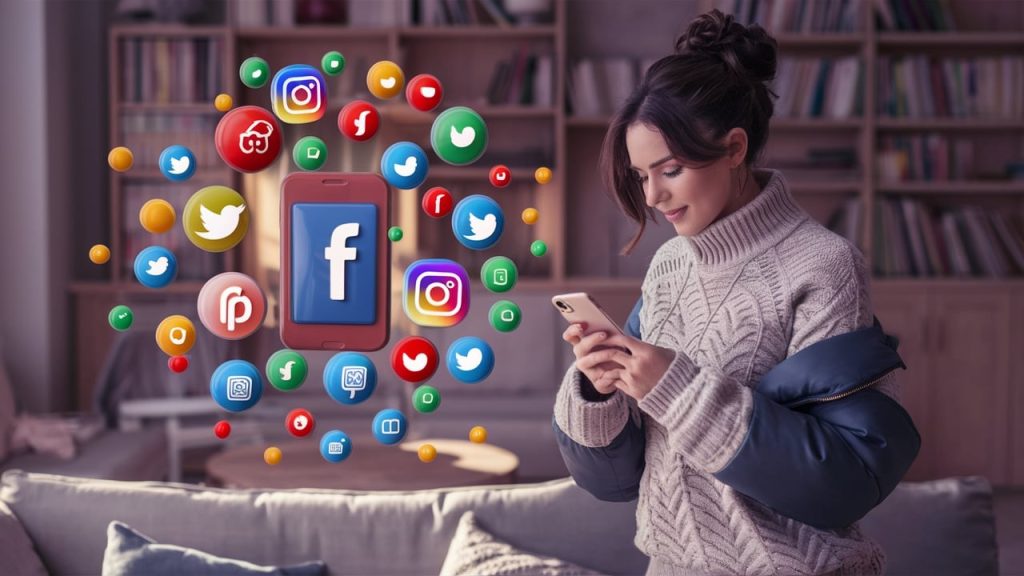The Power of Influencer Marketing in Today’s Digital Age
Aiden Foster August 11, 2025
In the fast-paced world of digital marketing, influencer marketing has quickly become a dominant force, transforming how brands engage with their target audiences. With the rise of social media platforms, particularly Instagram, YouTube, and TikTok, influencer marketing has evolved from a niche strategy to a mainstream approach used by companies across industries. But what does the future of influencer marketing look like in today’s tech-driven age?
This article explores how technology is driving the growth and transformation of influencer marketing, the latest trends, and how businesses can leverage this powerful tool to stay ahead in a crowded marketplace.

The Evolution of Influencer Marketing
Influencer marketing is no longer just about partnering with celebrities or high-profile personalities to promote products. It has shifted towards micro and nano-influencers—individuals with smaller, but highly engaged followings. According to recent data, influencer marketing is expected to reach $16.4 billion in 2025, reflecting its growing importance in the marketing world.
Technological advancements have played a pivotal role in this shift. Social media algorithms now prioritize organic engagement, and influencer-marketing platforms are evolving to help brands identify the right influencers and measure ROI more effectively.
How Technology Is Shaping Influencer Marketing
1. Data-Driven Insights for Smarter Campaigns
One of the primary ways that technology is revolutionizing influencer marketing is through the use of data analytics. Brands now have access to real-time data, which helps them assess the effectiveness of their campaigns and influencers’ engagement with their audiences.
By utilizing advanced algorithms and AI tools, companies can track metrics like:
- Engagement rates: How active an influencer’s audience is.
- Audience demographics: Age, gender, and location of followers.
- Conversion rates: How many followers made a purchase or took action after seeing a post.
This data-driven approach allows brands to make informed decisions and optimize their influencer partnerships for maximum impact.
2. AI-Powered Influencer Discovery Platforms
Another significant advancement in the influencer marketing landscape is the rise of AI-powered platforms that match brands with the right influencers. Platforms like Upfluence, Influencity, and Traackr use AI to analyze an influencer’s audience and content performance, allowing brands to identify influencers who align with their target audience.
AI-based tools can even predict the potential success of a campaign before it goes live by analyzing historical data from similar campaigns. This allows brands to minimize risk and invest in influencers who have the highest probability of driving results.
3. Augmented Reality (AR) and Virtual Influencers
In the realm of emerging tech, augmented reality (AR) and virtual influencers are transforming the influencer marketing game. AR filters have become an essential tool in influencer campaigns, allowing brands to engage audiences in a fun and interactive way.
Virtual influencers—computer-generated personas—are also on the rise. These digital beings are created using advanced CGI technology and are increasingly being used by top brands for campaigns. Virtual influencers can engage audiences 24/7, maintain a consistent brand image, and never require time off, making them a unique and innovative marketing tool.
The Role of Social Media Platforms in Influencer Marketing
Social media platforms continue to be the driving force behind influencer marketing’s success. They provide brands with the ability to reach vast audiences and track engagement in real-time. However, each platform has its own dynamics that impact how influencer marketing is carried out.
Instagram remains one of the most popular platforms for influencer marketing due to its visual nature and diverse user base. The introduction of new features like Instagram Reels has allowed influencers to create short-form, engaging content that can go viral, giving brands access to an even wider audience.
TikTok
TikTok’s rise has been a game-changer for influencer marketing. The platform’s algorithm rewards creativity and engagement, making it easier for influencers—especially those with smaller followings—to gain traction. Brands have been quick to recognize the power of TikTok and its ability to generate massive awareness in a short amount of time. The viral nature of TikTok has made it the go-to platform for many brands looking to capitalize on trending content.
YouTube
While YouTube may not be the newest platform, it continues to be a dominant player in the influencer marketing space. Long-form video content provides influencers with the ability to tell deeper, more compelling stories. Brands often partner with YouTubers to create sponsored videos, product reviews, and tutorials that offer a more authentic and engaging experience for viewers.
Trends Shaping Influencer Marketing in 2025
As we look to the future of influencer marketing, several key trends are emerging that reflect the growing influence of technology on this marketing strategy.
1. Long-Term Brand Ambassadors Over One-Off Collaborations
While one-off influencer collaborations are still common, more brands are opting for long-term partnerships with influencers. By working with influencers over an extended period, brands can cultivate stronger, more authentic relationships with their audiences. Long-term partnerships also help to build trust, as audiences are more likely to believe in the authenticity of a product or service if the influencer consistently promotes it.
2. Authenticity and Transparency
With growing concerns about the authenticity of influencer endorsements, transparency is becoming a critical trend in influencer marketing. Brands are increasingly prioritizing influencers who align with their values and present a more genuine representation of their products.
Consumers are becoming more discerning, and they expect influencers to disclose paid partnerships clearly. Authenticity is no longer just a buzzword—it’s a necessity for influencer marketing success.
3. Video Content Continues to Dominate
Video content remains king in influencer marketing, and it’s only expected to grow in importance. Short-form videos, like those on TikTok and Instagram Reels, are a powerful tool for creating viral content. But long-form video content, such as YouTube vlogs, continues to deliver high engagement and trust, making it an essential element of influencer marketing strategies.
4. The Rise of Micro and Nano-Influencers
Brands are increasingly shifting their focus to micro and nano-influencers, who, despite having smaller followings, often yield higher engagement rates. These influencers tend to have more niche audiences and create more personalized connections with their followers. As a result, they often provide better ROI compared to larger influencers with millions of followers.
How to Leverage Influencer Marketing in Today’s Tech-Driven World
To succeed in influencer marketing in the tech age, brands need to:
- Choose the right influencers: Use AI-powered platforms to identify influencers who resonate with your target audience.
- Embrace video content: Invest in short-form and long-form video campaigns that leverage the power of visual storytelling.
- Focus on authenticity: Work with influencers who genuinely align with your brand and who can create honest, relatable content.
- Track performance: Use data analytics to measure the effectiveness of your campaigns and adjust strategies in real-time.
Conclusion
In today’s digital age, influencer marketing is an indispensable tool for businesses looking to engage with their audience and drive results. As technology continues to evolve, brands will need to stay ahead of the curve by embracing new tools and trends. From AI-powered platforms to augmented reality experiences, influencer marketing is set to continue shaping the future of digital marketing.
References
- Statista. (2024). Influencer marketing industry size worldwide from 2016 to 2025. Statista. Available at: https://www.statista.com (Accessed: 11 August 2025).
- Upfluence. (2023). How AI is transforming influencer marketing. Upfluence. Available at: https://www.upfluence.com (Accessed: 11 August 2025).
- Smart Circle. (2025). The future of influencer marketing: Trends to watch in 2025. Smart Circle. Available at: https://www.smartcircle.com (Accessed: 11 August 2025).







